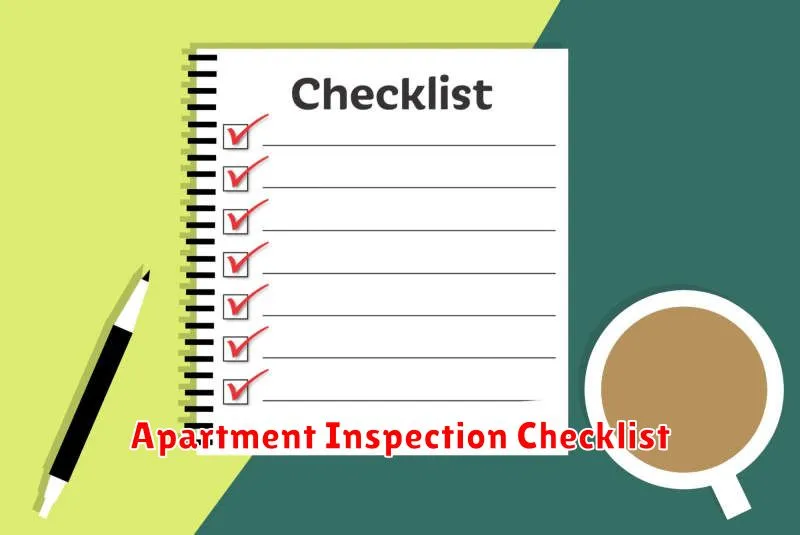Signing a lease is a big commitment, and it’s crucial to make sure you’re getting what you pay for. Before you sign on the dotted line, it’s essential to conduct a thorough apartment inspection. This process allows you to identify any potential issues or problems with the property and ensure it meets your needs and expectations. A comprehensive apartment inspection can help you avoid costly repairs, unexpected surprises, and potential conflicts with your landlord. This guide will walk you through the steps of inspecting an apartment and help you make an informed decision.
Preparing for the Apartment Inspection
Before you even set foot in the apartment, make sure you have a checklist of everything you want to inspect. This will help you stay organized and ensure you don’t miss anything important. Include items like the appliances, plumbing, electrical outlets, windows, and doors.
Take pictures of any existing damage or issues you find. This will serve as documentation in case you need to make a claim later. Make sure to get the landlord’s permission before taking any photos.
Be prepared to ask questions about the apartment. Don’t be afraid to ask anything that is unclear or you want to know more about. For example, ask about the laundry facilities, parking, and any pet policies.
Finally, be sure to take your time during the inspection. Don’t rush through it and make sure to check everything thoroughly.
Checking the Overall Condition of the Apartment
Before signing the lease, it’s crucial to thoroughly assess the apartment’s overall condition. This includes checking for any obvious signs of damage or neglect. Pay attention to the walls, floors, ceilings, and windows. Look for cracks, holes, water damage, peeling paint, or stains. Also, check the condition of the appliances, fixtures, and cabinetry. Ensure everything is functional and in good working order. Document any existing issues with photographs or a detailed list, and discuss them with the landlord before signing the lease.
Take note of any potential hazards or safety concerns, such as loose railings, uneven steps, or faulty wiring. It’s essential to ensure that the apartment meets basic safety standards and is habitable. If you find any significant problems, consider negotiating a repair clause in the lease or asking for a rent reduction.
Inspecting the Kitchen Appliances and Fixtures
The kitchen is often considered the heart of the home, so it’s essential to carefully inspect its appliances and fixtures before signing a lease. Start by checking the refrigerator. Make sure it’s cold enough and that the freezer compartment is working properly. Also, look for any signs of rust or damage. Next, examine the stove/oven. Turn it on and check that all burners and the oven heat up evenly. Look for any cracks or damage on the stovetop and inside the oven. Don’t forget to inspect the dishwasher. Run it through a cycle to ensure it’s cleaning effectively and that there are no leaks. Lastly, check the sink for any leaks or clogs. Ensure that the faucet is working properly and that the garbage disposal is functioning correctly. If you find any issues with the appliances or fixtures, be sure to document them in writing and discuss them with the landlord before signing the lease.
Examining the Bathroom and Plumbing
The bathroom is another crucial area to scrutinize. Start by turning on the faucet in the sink and bathtub/shower to check for water pressure and ensure the water runs clear. Look for any leaks or signs of water damage around the fixtures and pipes.
Flush the toilet multiple times to see if it flushes properly and doesn’t leak. Pay attention to the water tank; a constantly running toilet indicates a leak that could lead to higher water bills.
If the apartment has a washing machine, run a cycle to check its functionality and ensure it drains properly. Inspect the area around the washer for signs of leaks or water damage.
Finally, make sure the bathroom ventilation system is working properly by turning it on and checking if it effectively removes moisture and odors.
Testing the Electrical Outlets and Lighting
Before you sign the lease, it’s important to thoroughly test all the electrical outlets and lighting fixtures in the apartment. This ensures that everything is in working order and that you won’t have any surprises later on.
Start by plugging a lamp or other device into each outlet. If the outlet works, the device should power on. If it doesn’t, then the outlet is likely faulty. Check all of the outlets, including those in the kitchen, bathroom, bedrooms, and living room.
Next, test all of the light fixtures. Turn on each light switch and make sure that the corresponding fixture illuminates. If a light fixture doesn’t work, then it could be a problem with the bulb, the switch, or the wiring.
If you find any faulty outlets or light fixtures, make sure to document them and report them to the landlord before signing the lease. This way, you can ensure that the landlord will fix the problem before you move in.
Assessing the Heating and Cooling Systems
Before signing a lease, it’s crucial to ensure the apartment’s heating and cooling systems are in good working condition. These systems are essential for your comfort and well-being, especially during extreme weather. Here’s how to assess them:
Turn on the Heating and Cooling Systems: Test both systems thoroughly. Run the heater and check if it produces sufficient heat and distributes it evenly throughout the apartment. Run the air conditioner and ensure it cools effectively and doesn’t make any unusual noises.
Inspect the Thermostat: Verify that the thermostat is responsive and allows you to adjust the temperature easily. Look for any damage or signs of malfunction.
Check for Air Filters: If applicable, inspect the air filters for both the heating and cooling systems. Ensure they are clean and functioning properly. Dirty filters can hinder airflow and reduce efficiency.
Ask About Maintenance: Inquire about the landlord’s maintenance policy for the heating and cooling systems. Understand how often they are serviced and who is responsible for repairs.
Note Any Issues: If you discover any problems with the heating or cooling systems, document them clearly. Take pictures and discuss them with the landlord before signing the lease. Ensuring these systems are in good condition can prevent future hassles and ensure your comfort in the apartment.
Inspecting Walls, Floors, and Ceilings for Damage
Once you’ve taken a look at the overall apartment, it’s time to get more specific and check for any potential damage. Start by carefully inspecting the walls, floors, and ceilings. Look for any cracks, holes, or stains that might indicate structural problems. It’s also important to check for water damage, which can be a sign of leaks or other issues. Be sure to check the trim and molding as well, which can often be a good indicator of how well the apartment has been maintained.
When inspecting the walls, pay attention to the paint and wallpaper. Look for any peeling or flaking, which can indicate that the walls are not properly sealed. Also, check for any signs of water damage, such as discoloration or bubbling paint. In addition, pay attention to the molding and make sure it’s in good condition, without cracks or gaps. These are common places for leaks or other problems to develop.
Next, inspect the floors. If you’re renting a unit with carpeting, check for stains or odors that might indicate water damage. Check the baseboards for any signs of damage, like cracks or gaps. If you are renting an apartment with hardwood or tile flooring, look for cracks, unevenness, or loose tiles. Ensure that the floors are level and safe to walk on.
Finally, inspect the ceiling. Look for any cracks, stains, or peeling paint, which could indicate water damage or a leak. Check the fixtures and ensure that they are securely attached to the ceiling. Additionally, if you are renting a unit with a sprinkler system, make sure the sprinkler heads are not obstructed and are working properly.
By carefully inspecting these areas, you can ensure that you are not inheriting any existing damage and that the apartment is safe and habitable. Make sure to document any damage you find with photos or videos. If you have any concerns, don’t hesitate to ask the landlord to address them before you sign the lease.
Checking for Signs of Pests or Infestations
Pests and infestations can be a real headache, and it’s crucial to ensure the apartment you’re considering is free of these unwanted guests. A thorough inspection will help you identify potential problems early on.
Look for signs of rodents, including droppings, gnaw marks on furniture or walls, and unusual noises in the walls or ceiling. Also, check for insects like cockroaches, ants, or bed bugs. Keep an eye out for droppings, shed skins, or live insects. Pay attention to areas like baseboards, corners, under sinks, and behind appliances.
Additionally, inspect for signs of water damage, which can attract pests. Look for dampness, mildew, or mold growth. If you detect any of these issues, it’s essential to address them with the landlord to ensure they are properly dealt with before you move in.
Remember, a thorough inspection is vital before signing a lease. It will help you identify any existing pest problems and address them with the landlord before you move in. This proactive approach will prevent potential headaches and ensure you have a comfortable and pest-free living environment.
Evaluating Safety Features (Smoke Detectors, Fire Extinguishers)
Before signing a lease, it’s crucial to assess the apartment’s safety features, particularly smoke detectors and fire extinguishers. These are essential for your safety and peace of mind.
Smoke Detectors should be in working order and located in appropriate locations throughout the apartment, including near bedrooms and common areas. Test each one by pressing the button and ensuring a loud, clear alarm sounds. Ask the landlord about the frequency of testing and maintenance of the detectors.
Fire Extinguishers are another vital safety feature. Check for a fire extinguisher in the apartment, ideally in a visible and accessible location. Ensure it’s not expired and that the pressure gauge is in the green zone. It’s a good idea to familiarize yourself with how to use the extinguisher in case of an emergency.
If any of these safety features are missing, malfunctioning, or in need of replacement, be sure to bring it to the landlord’s attention and have it addressed before signing the lease. You deserve to live in a safe and secure environment.
Inspecting Windows and Doors for Security and Functionality
Before signing your lease, it’s crucial to check the apartment’s windows and doors for security and functionality. This ensures your safety and peace of mind while living there.
Windows: Start by opening and closing each window to check for smooth operation. Make sure the locks function properly and are secure. Look for any cracks or broken glass that could compromise security. Inspect the window frames for any signs of damage or rot. If you’re concerned about noise levels, test the windows for noise insulation by opening and closing them.
Doors: Examine the doors for a snug fit in the frame and smooth operation of the hinges. Check the deadbolt locks to ensure they engage properly and are secure. Test the door handles and knobs for functionality. Pay attention to any gaps between the door and frame that could allow drafts or even intruders. Also, inspect the doorjamb and frame for damage or wear and tear.
If you find any issues with the windows or doors, bring them to the landlord’s attention before signing the lease. Addressing these concerns before moving in will save you hassle and potential security risks later.
Assessing Storage Space and Closet Availability
Before signing a lease, it is essential to assess the storage space and closet availability within the apartment. Insufficient storage can significantly impact your living experience, creating clutter and frustration. Begin by carefully inspecting the size and functionality of all closets, paying attention to their interior dimensions and hanging space. Consider the number of closets and their distribution throughout the apartment, ensuring they are conveniently located for your needs.
Additionally, evaluate any other storage options available, such as a dedicated storage room, shelves, or built-in cabinets. Determine if these spaces are sufficient for your belongings, especially if you have seasonal items, sporting equipment, or bulky furniture. It is also prudent to inquire about any restrictions on storage space usage, such as limitations on size or type of items permitted.
To ensure a comfortable and organized living environment, make sure the available storage space aligns with your individual storage requirements. Consider the quantity and size of your belongings and whether the apartment offers adequate solutions to keep them neatly organized.
Checking Laundry Facilities and Functionality
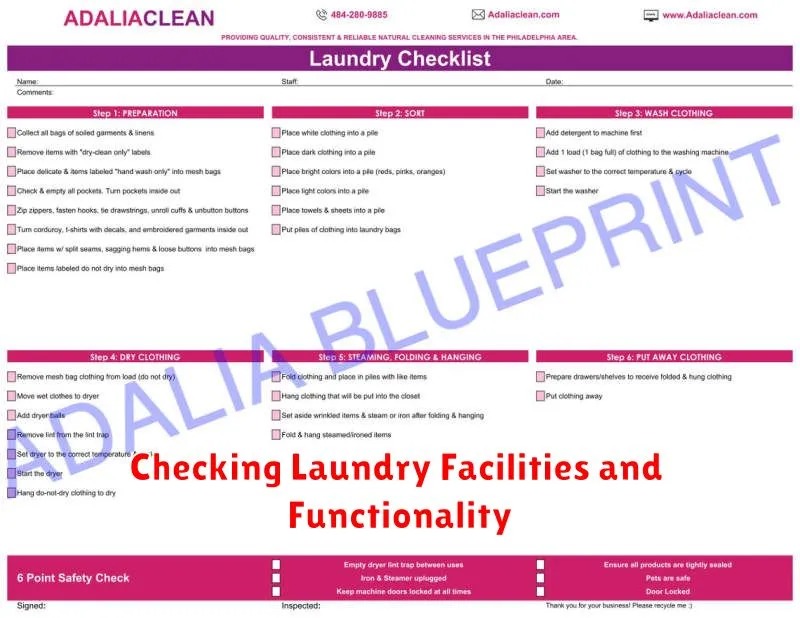
One of the most convenient amenities an apartment can offer is in-building laundry facilities. If you’re considering an apartment with laundry facilities, take the time to inspect them thoroughly. Check if the machines are in good working order. Run a test wash cycle to ensure everything is functioning properly.
Pay attention to the cleanliness of the laundry room. Are the machines well-maintained? Are there any signs of excessive wear and tear? Look out for any potential issues like leaks or clogged drains.
If the building offers shared laundry facilities, consider the number of machines available. If there are few machines and the building has many tenants, you might find yourself waiting long periods to use the laundry. Check the laundry schedule, especially if there are any restrictions on usage times or if there are separate machines for different types of laundry.
Finally, consider the cost of laundry. Some apartment buildings charge for using their laundry facilities, while others provide it as a free amenity. If there is a charge, compare the cost with other apartments and consider the overall value proposition.
Documenting Existing Damage and Taking Photos
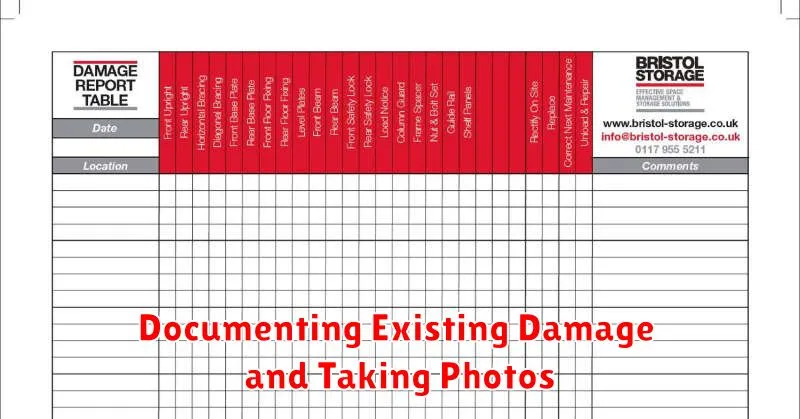
Before you sign the lease, take time to carefully inspect the apartment for any pre-existing damage. This step is crucial for protecting yourself from being held responsible for damage that wasn’t your fault. It’s essential to document any existing damage thoroughly. Take clear, well-lit photos of every imperfection, no matter how minor it seems.
Here’s a checklist to help you capture the right photos:
- Walls and ceilings: Look for cracks, holes, stains, peeling paint, or any other signs of wear and tear.
- Floors: Check for scratches, dents, unevenness, or any missing tiles or floorboards.
- Cabinets and appliances: Inspect for dents, scratches, broken doors, or any malfunctioning appliances.
- Windows and doors: Pay attention to cracked glass, broken window frames, sticking doors, or any faulty locks.
- Plumbing fixtures: Look for leaks, drips, or any broken faucets, toilets, or sinks.
- Electrical outlets and switches: Check for loose wiring, broken outlets, or any faulty switches.
While taking photos, remember to capture the whole area, including the surrounding environment, to provide context. Additionally, note down the specific location of the damage, its size, and a brief description in a separate document. This documentation will serve as your evidence should any disputes arise regarding the apartment’s condition.
Reviewing the Lease Agreement Carefully
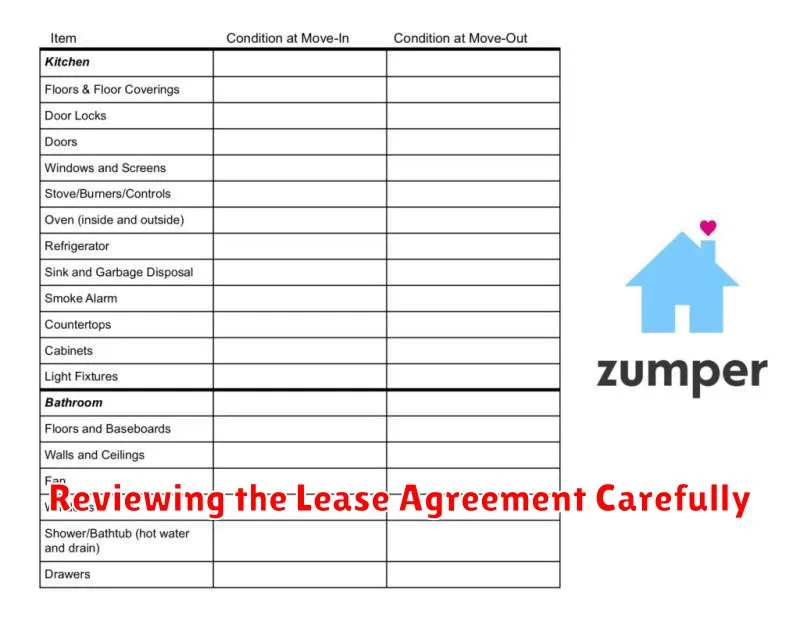
Before signing the lease, you should carefully review the entire document. This is the legal agreement between you and the landlord that outlines the terms of your tenancy. Pay close attention to the following:
Rent amount and due date: Make sure you understand the amount of rent you are obligated to pay and the due date. Look for any clauses regarding late fees or penalties.
Lease term: The lease will specify the duration of your tenancy. Be sure to understand the renewal process and any associated fees.
Pet policy: If you have pets, make sure the lease allows them and any associated restrictions or fees.
Utilities: The lease should specify which utilities are included in your rent and which you are responsible for paying.
Maintenance responsibilities: The lease will outline the responsibilities of both you and the landlord regarding repairs and maintenance.
Early termination: Understand the penalties or fees associated with breaking the lease early.
Security deposit: The lease will specify the amount of the security deposit and how it will be returned to you when you move out.
Notice period: The lease will specify how much notice you need to give the landlord if you plan to move out.
Quiet enjoyment: The lease should ensure you have the right to peaceful and undisturbed enjoyment of the premises.
Smoking policy: The lease should indicate whether or not smoking is permitted in the apartment.
Parking: If parking is provided, the lease should specify the rules and any associated fees.
If you have any questions or concerns about the lease agreement, don’t hesitate to ask the landlord or their representative for clarification. It’s better to be safe than sorry.
Asking Questions and Clarifying Concerns with the Landlord
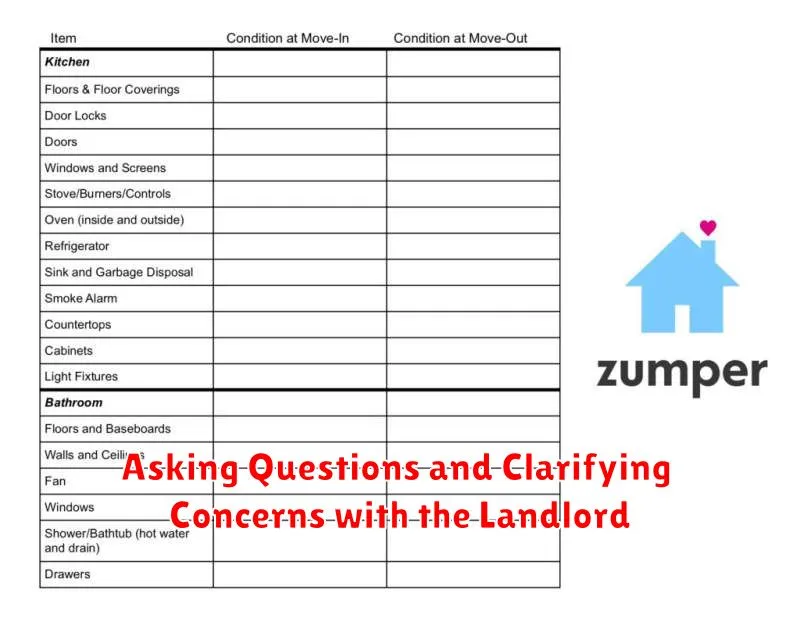
Before you sign the lease, take this opportunity to address any questions or concerns you have with the landlord. This will ensure you understand the terms of the lease and avoid any potential issues in the future. Here are some key areas to discuss:
Utilities: Inquire about the responsibility for paying utilities, such as water, electricity, gas, and trash. Determine whether these costs are included in the rent or if you will be responsible for paying them separately. Make sure you understand the billing process and any potential fees or penalties for late payments.
Maintenance and Repairs: Discuss the landlord’s responsibility for repairs and maintenance. Ask about the process for reporting problems and the timeframe for resolving them. Clarify who is responsible for handling issues related to appliances, plumbing, or electrical systems.
Parking: If parking is included, ask about the availability of parking spaces and whether there are any restrictions, such as permits or fees. Inquire about the process for parking permits or guest parking.
Pets: If you have pets, be sure to discuss the landlord’s pet policy. Inquire about breed restrictions, pet fees, and any other rules or guidelines regarding pets.
Noise and Disturbances: It’s essential to inquire about noise levels in the building and any policies regarding noise complaints. Clarify the procedures for addressing noise disturbances from other tenants.
By asking these questions and clarifying your concerns, you can ensure you have a clear understanding of the terms and conditions of the lease. This can help prevent misunderstandings and potential conflicts with the landlord in the future.

